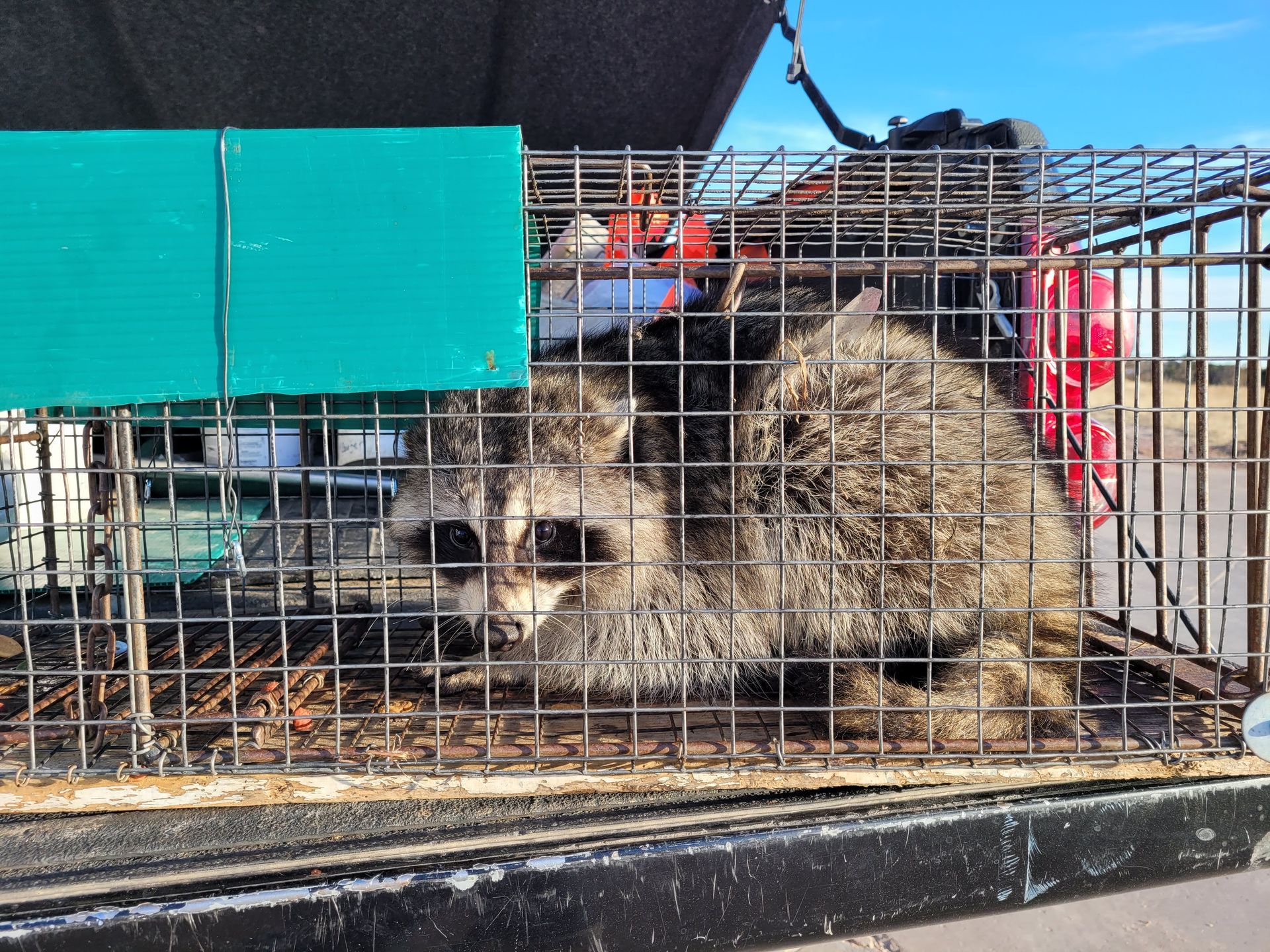Wildlife Evictions
Fox Eviction and Removal
Three species of foxes occur in the Pikes Peak Region: the red fox (Vulpes vulpes), the gray fox (Urocyon cinereoargenteus), and theprairie swift fox (Vulpes elox). The most familiar and common is the red fox. Although native red foxes can be found at high elevations in Colorado, our local variety is descended from foxes released from fur farms in the Black Forest area in the 1940s. They are very common in urban/suburban areas.
They are very comfortable around people, often denning under sheds and porches. They are rarely a threat to dogs, but they frequently kill and eat housecats. Fleas, rank odors, and remains of kills can be a real nuisance.
The salt-and-pepper-colored gray fox is native to the rocky foothills along the Front Range, but they are no longer common due to parvovirus in the past and competition with the invasive red fox. Swift foxes are short-grass prairie animals native to eastern El Paso County. They are common in places. Neither gray foxes nor swift foxes are much of a nuisance.
We regularly evict red foxes from dens too close to people and live-trap/relocate them. We’ll have more information about fox biology, problems they cause, and solutions we provide coming soon. In the meantime, if you have a fox problem or concern, call us at
719-636-1014 for an assessment and prices.
Raccoon Eviction and Removal
Raccoons (Procyon lotor), with their distinctive black mask and ringed tail, are one of the most familiar and common North American mammals. Primarily an eastern and southern animal in Colonial times, raccoons have greatly expanded their range. They are now common to abundant in Colorado, especially along waterways and in suburban/urban areas, including Colorado Springs. Periodically, distemper outbreaks significantly reduce local populations. Adults are medium-sized, weighing 20-30 lbs.
Their dense, luxurious fur varies from blackish-brown to yellowish-brown. Aptly described as “opportunistic omnivores,” raccoons subsist on a wide variety of plant and animal foods, including fruits, insects, field crops, small animals, fish, pet foods, garbage, etc. Breeding occurs primarily in January/February, with a litter of 2-5 young being born in early April. By the end of June, many litters begin foraging with “mom and getting into mischief.
Raccoons can be a nuisance in a variety of ways: 1) living in human structures (e.g., crawl spaces, attics, garages); 2) having their young in attics and fireplace chimneys; 3) having toilet areas (i.e., latrines) in, on, and around human structures; 4) getting into garbage/trash cans; 5) raiding fish ponds/water features; 6) ravaging fruits and crops; 7) damaging roofs, soffits, wiring, vents, and insulation; 8) acting aggressively towards people; 9) posing human health concerns (e.g., raccoon droppings can be considered hazardous material due to endoparasites, fungus, etc.) Raccoons are very intelligent, inquisitive, dexterous, powerful, ravenous, and often bold around people. All that can spell “t-r-o-u-b-l-e.” The title “masked bandit” is very fitting.
Our approach to controlling raccoon damage typically includes: 1) an investigation/inspection to confirm presence, find points of entry, and assess damage; 2) setting appropriate live traps, initiating eviction procedures, or removing animals on the spot; 3) relocating animals appropriately; 4) monitoring to ensure all animals are out of the structure; and 5) repairing/excluding entry points to both look good and permanently keep raccoons out. Examples of the latter include wire mesh screening, metal flashing barriers, chimney cap installation, tree collar installation, tree branch trimming, chemical repellent utilization, etc. We also do raccoon latrine clean-up, disinfection, and odor control.
Note: The ringtail (or ringtail cat) (Bassariscus astutus), a taxonomic “cousin” to raccoons, is also found in the area, especially in the Front Range foothills. These delicate, housecat-sized creatures resemble a cross between a fox, a housecat, and a raccoon. They are a yellowish-tan color with an enormous ringed tail. They occasionally are found in human structures. We’ve removed several from the Broadmoor Hotel and Glen Eyrie Castle.
If you need help with a raccoon (or ringtail) problem, call us at
719-636-1014 for an investigation and prices. We’d be happy to help.
Quick Links
Contact Information
Phone: 719-636-1014
Email: alpinewildlifecontrolllc@gmail.com
Address: Colorado Springs, CO 80918
Business Hours: Mon - Fri: 8:00 am – 5:00 pm
Emergency Services 24/7
Licensed and Insured






Quick Links
Contact Information
Phone: 719-636-1014
Email: alpinewildlifecontrolllc@gmail.com
Address: Colorado Springs, CO 80918
Business Hours: Mon - Fri: 8:00 am – 5:00 pm
Emergency Services 24/7
Licensed and Insured








